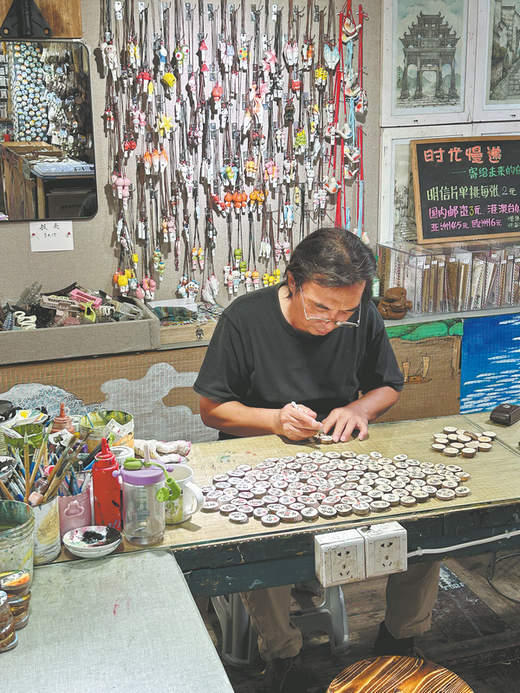Honored rural areas receive boost in visitors
Eight cultural sites receive recognition from UN agency, serving as testament to traditional life, Cheng Si reports.
By Cheng Si | China Daily | Updated: 2024-10-02 12:48

The development of the tourism industry and a steady inflow of young entrepreneurs have injected new life into ancient rural villages in China, where travelers can visit well-preserved historical architecture, cultural and natural assets, and the residents upholding traditions. China's experience in reinvigorating ancient villages also provides references for other countries in their attempts at historical preservation and restoration.
International recognition
Rooted in the farming culture, China has over 600,000 administrative villages with diverse customs, eating habits and cultural vibes, among whom, eight villages are recognized as the "Best Tourism Village" by the World Tourism Organization, a United Nations agency, in recent years.
The UNWTO Best Tourism Villages initiative, launched in 2021, utilizes an all-around evaluation of villages "with accredited cultural and natural assets, a commitment to preserving community-based values, and a clear commitment to innovation and sustainability across economic, social and environmental dimensions".
Zhagana village in the Gannan Tibetan autonomous prefecture, in China's northwestern Gansu province, won UNWTO's recognition in October last year because of its spectacular natural scenery of valleys, rivers, primeval forests and glaciers and also the distinctive Tibetan-style houses, culture and slow-paced lifestyle of the residents.
Zhagana, meaning "stone box" in the Tibetan language, is located at an altitude of around 3,500 meters with the highest peak reaching 4,500 m. The steep mountains, forests, lakes and grasslands and the skillful stone walls shape the village into a "stone palace".
China's other seven villages achieving the honor are Yucun village in Zhejiang; Xidi village in Anhui; Dazhai village in the Guangxi Zhuang autonomous region; Jingzhu village in Chongqing; Huangling village in Jiangxi; Zhujiawan village in Shaanxi; and Xiajiang village in Zhejiang.
Xidi gets an upgrade
The Xidi village of Yixian in Huangshan, in the eastern province of Anhui, is another Best Tourism Village, mainly for its harmonious blend of natural views, activities and well-preserved ancient buildings. It was listed as a UNESCO World Heritage Site in 2000.
The village, with a history of 970 years, was shaped back in the Northern Song Dynasty (960-1127) and embraced its heyday in the early Qing Dynasty (1616-1911). Its strong vibes of Huizhou culture, highlighted through an iconic memorial archway and ancestral temples, woos tourists from home and abroad, especially young entrepreneurs.

"The village was in poverty with residents mainly living on agricultural activities like farming, planting tea and raising silkworms. Things began to change after they developed tourism in 1986, taking advantage of the village's historical architecture and Huizhou culture," said Zhang Sheli, general manager of Yixian Huihuang Xidi Tourism Development Co.
He said that the tourism business was first operated by the villagers but transferred to the company in 2013. "The village's tourism is managed trilaterally by the local government, the company and the village, aiming at fairer and scientific management for common prosperity."
He said that developing tourism in the ancient village of Xidi has not only raised the incomes of residents, who gained jobs from restaurants, homestays or the tourism company, but it is pushing forward better protection of the village with residents' conciseness of sanitation, environmental protection and culture heritage enhanced. Winning the title of Best Tourism Village has helped Xidi experience an increase in tourism visits in recent years.
"In 2023, Xidi received 944,900 visits with ticket sales reaching about 43.4 million yuan ($6.15 million), up 180.89 percent and 121.51 percent from that in 2021, respectively — when the village had won the title from the UNWTO," he said, adding that the village has received more travelers from the Hong Kong Special Administrative Region, Taiwan, as well as those from South Korea, the United States and Singapore.
Hu Huizhong, the 60-year-old chairman of Xidi's elderly association, said that developing tourism has greatly changed the village and its residents, who overcame cash-strapped days and show a more upbeat spirit for their improving lives.
Zheng Chunsheng, 61, moved to the village in 2014 from the central province of Hubei after being fascinated by its leisurely life, natural scenery and long-standing culture.
"I worked as an art teacher in Wuhan, Hubei, and took students to the village for site drawings from the late 1990s to early 2000. I became a professional artist in Beijing before moving to the village.
"I've traveled many places nationwide and I think Xidi preserves the traditional Chinese farming and Huizhou cultures, which is what attracted me," he said, now operating cultural and creative product shops in the village with his family.
- Make tracks further afield
- City set to enjoy a bonanza of tourist attractions
- All eyes on China as tourism industry awaits full recovery
- China is a world leader in rural tourism, says UNWTO senior official
- Amazing China in 60 Seconds: Anhui
- Two Chinese villages listed as UNWTO's best tourism villages
























